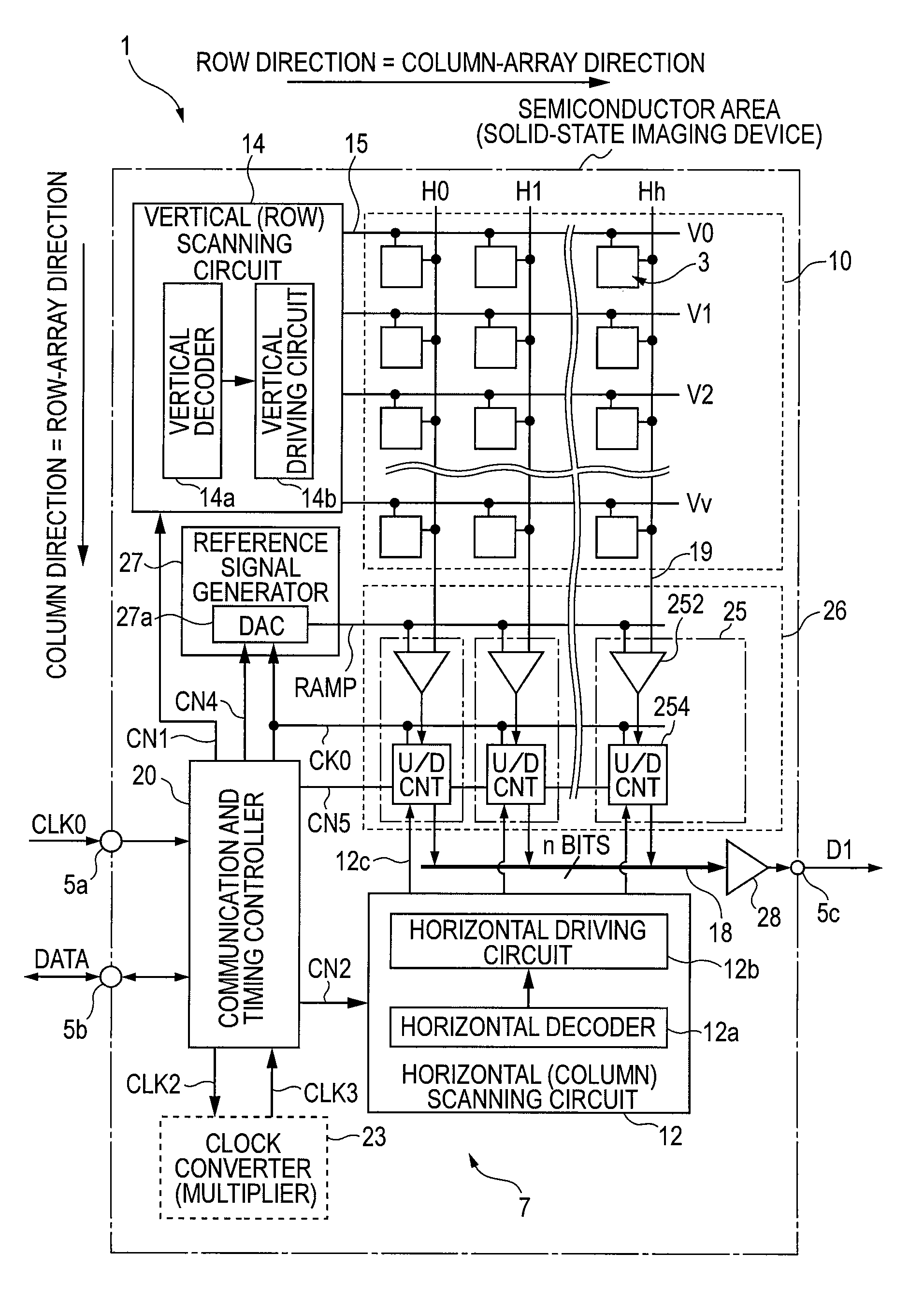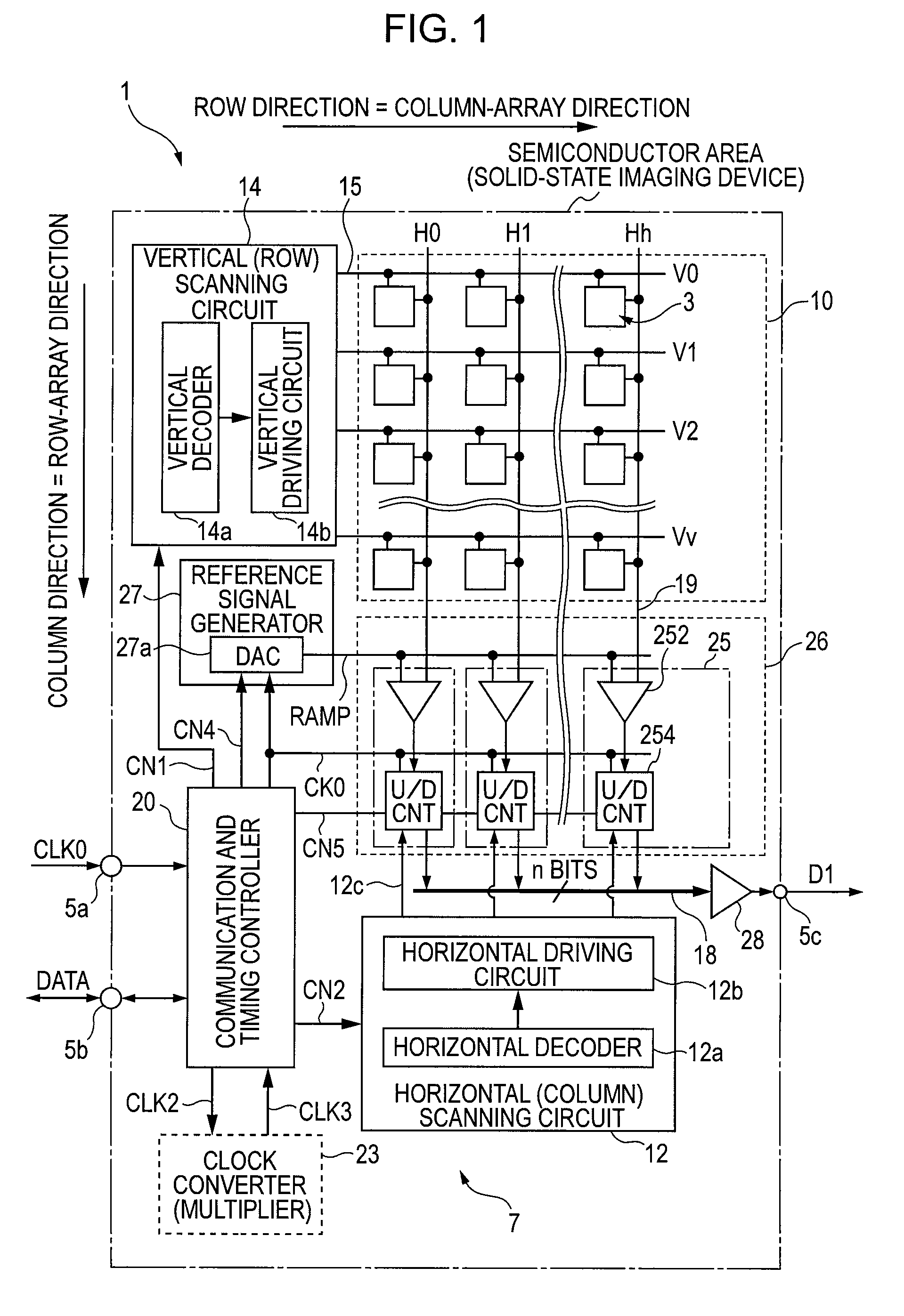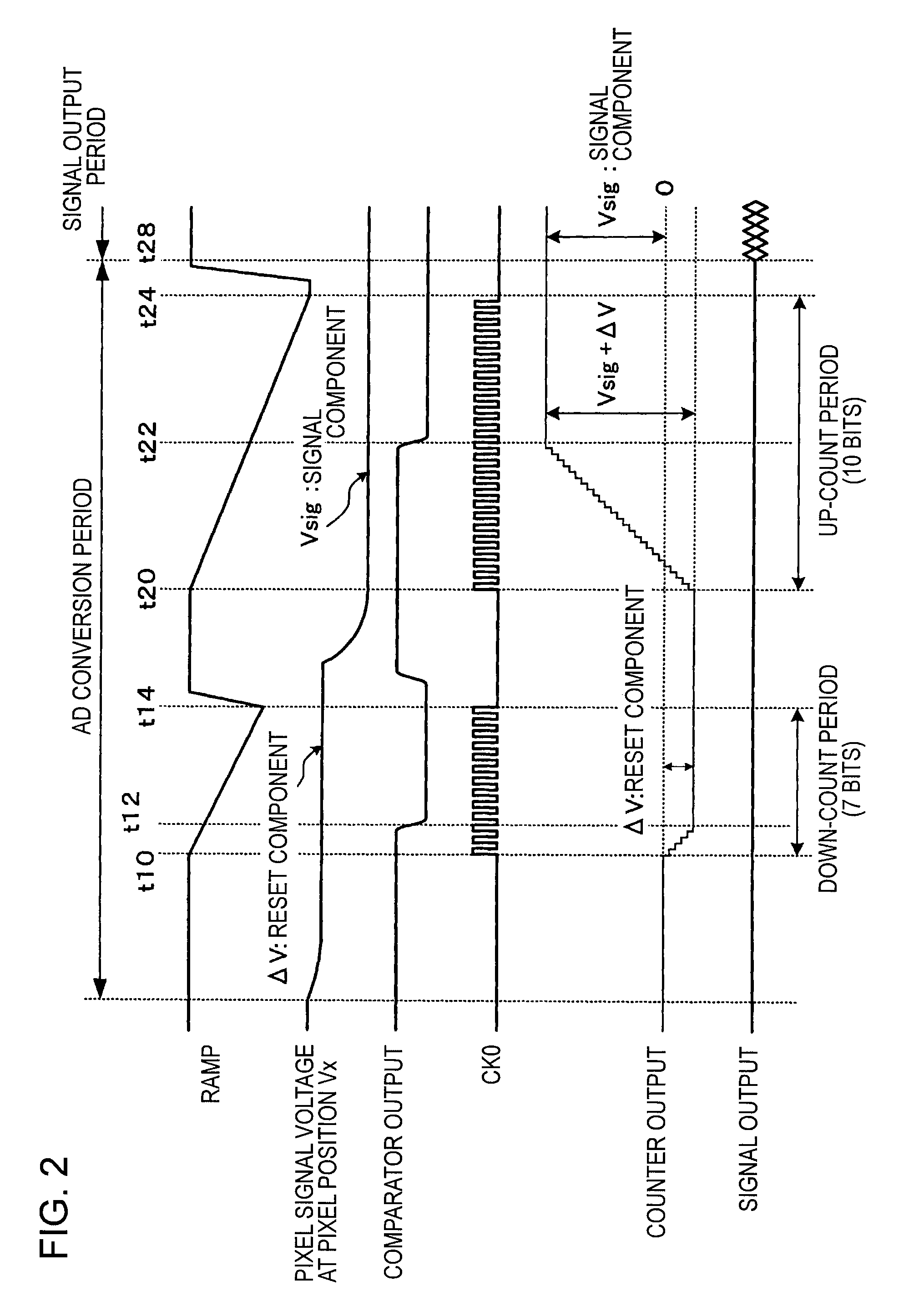Analog-to-Digital Conversion Method, Analog-to-Digital Converter, Semiconductor Device for Detecting Distribution of Physical Quantity, and Electronic Apparatus
a conversion method and digital converter technology, applied in the field of analog-to-digital conversion methods, can solve the problems of increasing circuit area, increasing noise or power consumption due to data transfer, etc., and achieve the effect of avoiding noise or increase in avoiding noise, current or power consumption, and reducing line length
- Summary
- Abstract
- Description
- Claims
- Application Information
AI Technical Summary
Benefits of technology
Problems solved by technology
Method used
Image
Examples
first embodiment
[0114]FIG. 1 is a schematic configuration diagram of a CMOS solid-state imaging device (CMOS image sensor) 1 as an implementation of a semiconductor device according to a first embodiment of the present invention. The CMOS solid-state imaging device 1 is also an implementation of an electronic apparatus according to an embodiment of the present invention.
[0115] The solid-state imaging device 1 includes a pixel unit 10 having a plurality of pixels 3 arranged in rows and columns (or in a two-dimensional matrix). Each of the pixels 3 includes a photosensitive element (which is one example of charge generator) that outputs a voltage signal corresponding to the amount of incident light. In the solid-state imaging device 1, correlated double sampling (CDS) processors and analog-to-digital converters (ADCs) are provided in a column-parallel manner.
[0116] More specifically, a plurality of CDS processors and ADCs are provided substantially in parallel to vertical signal lines 19 of columns...
second embodiment
[0199]FIG. 3 is a schematic configuration diagram of a CMOS solid-state imaging device (CMOS image sensor) 1 according to a second embodiment of the present invention. In the solid-state imaging device 1 according to the second embodiment, each of the column A / D circuits 25 according to the first embodiment is modified.
[0200] Each of column A / D circuits 25 according to the second embodiment includes a counter 254, a data storage unit 256 serves as an n-bit memory, and a switch 258. The data storage unit 256 is placed downstream of the counter 254, and stores a count value stored in the counter 254. The switch 258 is placed between the counter 254 and the data storage unit 256.
[0201] A memory-transfer instruction pulse CN8 is commonly supplied as a control pulse at a predetermined timing from the communication and timing controller 20 to the switches 258 provided for the respective columns. In response to the memory-transfer instruction pulse CN8, each of the switches 258 transfers...
third embodiment
[0210]FIG. 5 is a schematic circuit diagram of a voltage comparator 252 used in a CMOS solid-state imaging device (CMOS image sensor) 1 according to a third embodiment of the present invention. In the solid-state imaging device 1 according to the third embodiment, the voltage comparator 252 in the solid-state imaging device 1 according to the first embodiment is modified so that the comparison period can be set irrespective of variations in the reset component .DELTA.V. The details will now be described.
[0211] The voltage comparator 252 shown in FIG. 5 has a known differential amplifier configuration, as in the comparator disclosed in the fifth non-patent document noted above (see FIG. 8). The voltage comparator 252 includes a differential transistor pair 300 having NMOS transistors 302 and 304, a load transistor pair 310 having a p-channel MOS (PMOS) transistors 312 and 314, and a current source 320 having an NMOS constant-current source transistor 322. The load transistor pair 31...
PUM
 Login to View More
Login to View More Abstract
Description
Claims
Application Information
 Login to View More
Login to View More - R&D
- Intellectual Property
- Life Sciences
- Materials
- Tech Scout
- Unparalleled Data Quality
- Higher Quality Content
- 60% Fewer Hallucinations
Browse by: Latest US Patents, China's latest patents, Technical Efficacy Thesaurus, Application Domain, Technology Topic, Popular Technical Reports.
© 2025 PatSnap. All rights reserved.Legal|Privacy policy|Modern Slavery Act Transparency Statement|Sitemap|About US| Contact US: help@patsnap.com



